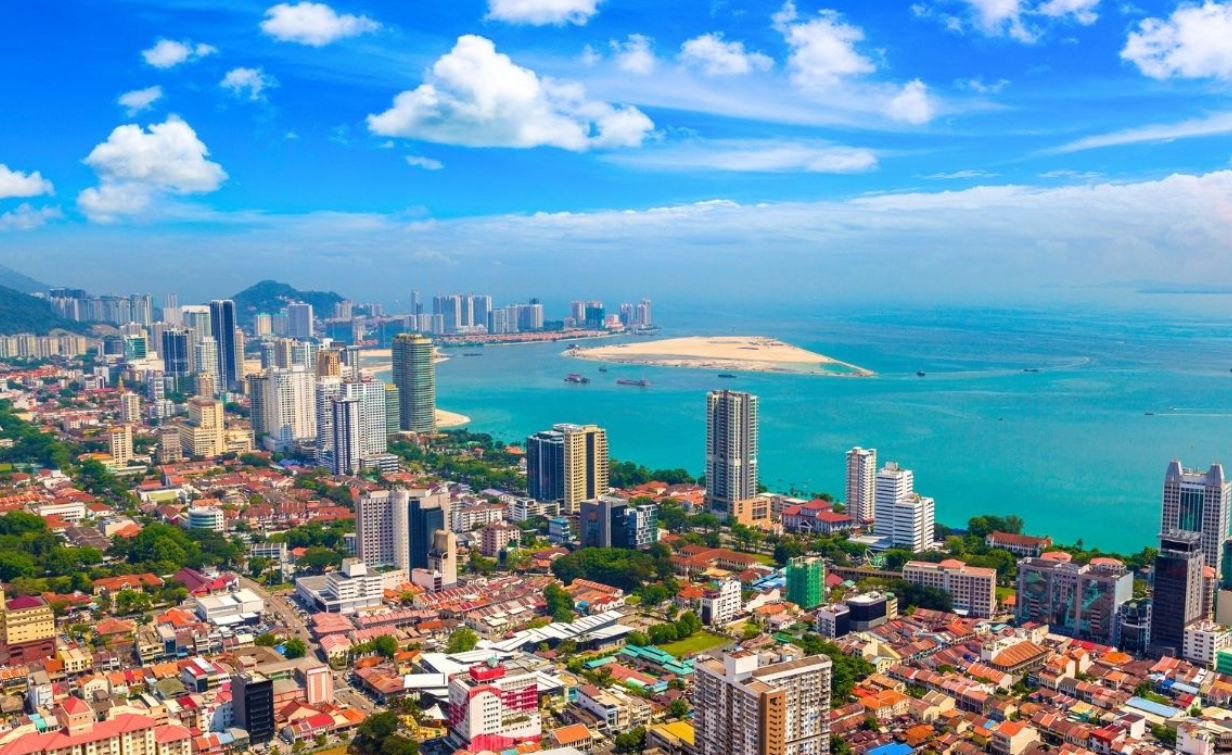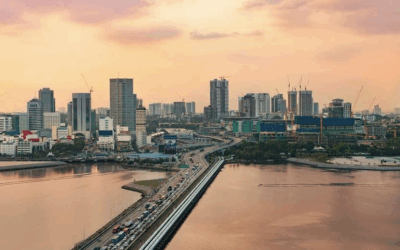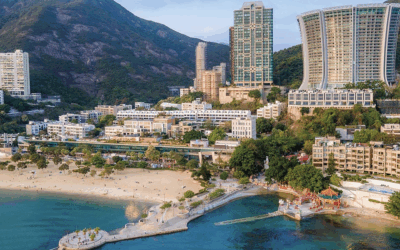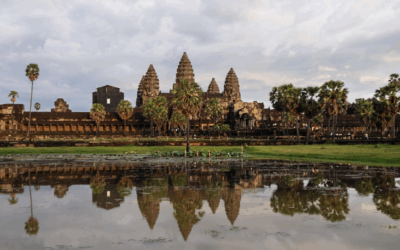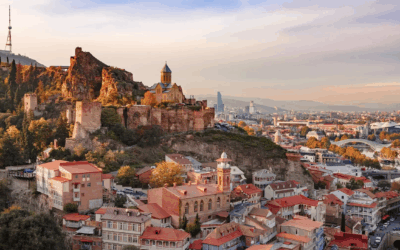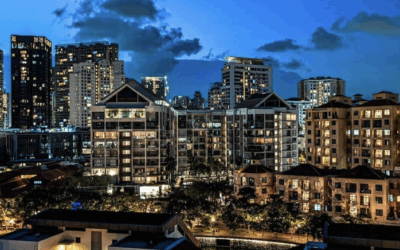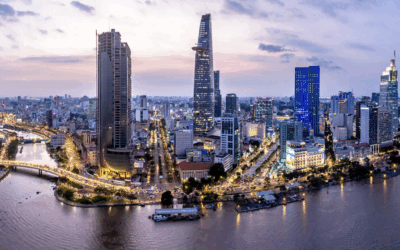With its mix of idyllic beaches and low cost of living, Malaysia has become an increasingly popular retirement destination for expats from around the world.
Malaysia offers foreign retirees a high quality of life, modern amenities, and plenty of ways to stay active – or simply relax – during your golden years.
In this guide, we’ll cover everything you need to know about retiring in Malaysia from visa options and healthcare to the best places to settle down.
Whether you seek an urban or beachside lifestyle, Malaysia has plenty of options if you’re a foreign retiree.
Getting a Retirement Visa in Malaysia
The first step to retiring in Malaysia long-term is sorting out your visa status. While Malaysia does not have a dedicated retirement visa, they offer a few pathways for older expats to gain long-term residence:
• Malaysia My Second Home (MM2H) – This renewable visa is the closest option you’ll get to a retirement visa. To qualify, you must be over 30 and place a term deposit of between 500,000 to 5 million MYR depending on the specific type of MM2H visa
There are three different types of MM2H visas: silver, gold, and platinum. Besides cost, the main difference between them is length of visa validity and whether you can apply for permanent residence.
• Employment Pass – Foreigners who come to Malaysia on an employment pass can apply for permanent residence after living in the country for over a year. This provides a way to retire in Malaysia without needing ongoing work sponsorship.
• Entrepreneur Visa – Opening a business in Malaysia with 50,000 MYR in capital allows entrepreneurs to gain permanent residence after operating the business for over 2 years.
• Marriage Visa – Marrying a Malaysian citizen gives direct access to permanent residence and a pathway to retirement in Malaysia.
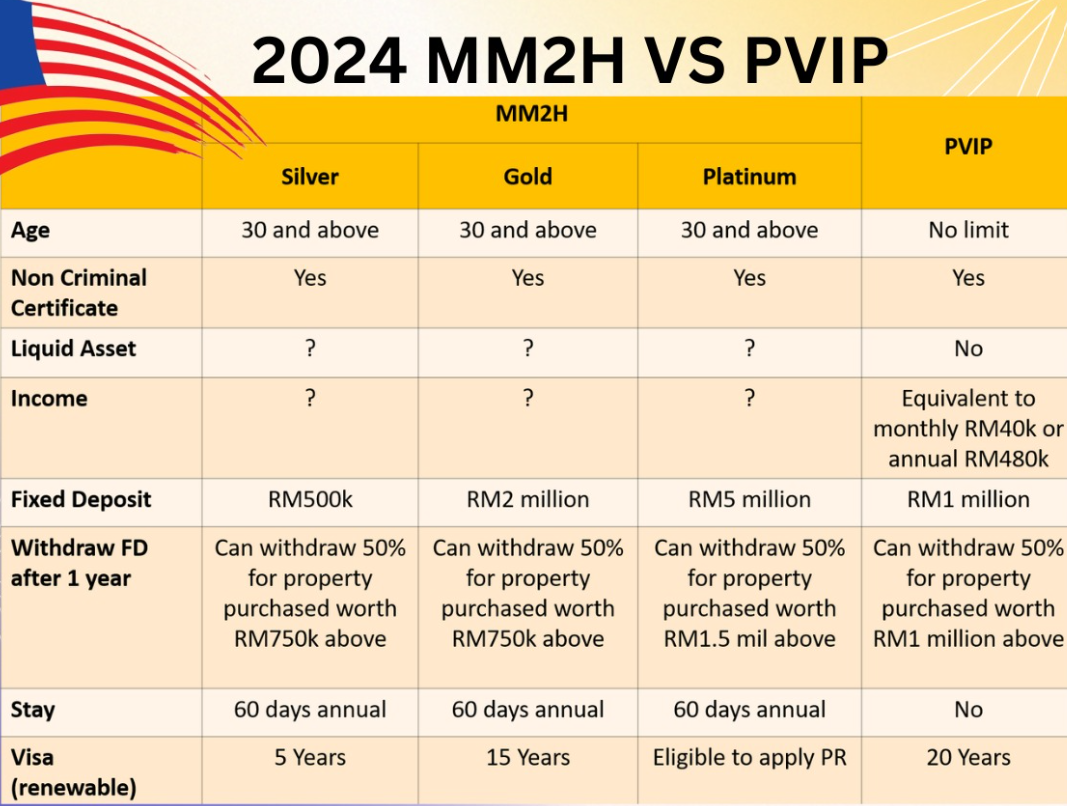
Here’s a chart comparing the different types of MM2H visas with the new PVIP program. These are the most popular ways to get a long-term visa in order to retire in Malaysia.
For most retirees, the MM2H option is the easiest method. This provides a renewable visa which is tied to a fixed deposit in a bank account. Overall though, Malaysia offers several feasible routes for older expats to obtain long-term residence.
Healthcare in Malaysia
Access to quality affordable healthcare is a top priority for retirees. Malaysia’s healthcare system offers high quality care and modern facilities on par with the West.
The country has an extensive private healthcare network with many internationally accredited hospitals and clinics.
While Malaysian citizens pay low rates at government hospitals, expat retirees will need to utilize private healthcare. Many major insurance companies offer health plans tailored to expats with premiums in the range of $150 to $300 per month depending on coverage levels.
Even without insurance, private hospital fees and outpatient costs in Malaysia are very reasonable compared to the exorbitant healthcare pricing in countries like the USA.
Prescription meds can be purchased easily over-the-counter at local pharmacies for a fraction of what they’ll cost you back home.
Overall, foreigners who retire in Malaysia benefit from a healthcare system that offers quality and affordability.
Cost of Living in Malaysia
A major appeal of Malaysia for foreign retirees is the low cost of living compared to most Western countries.
While not as cheap as neighboring countries like Thailand or Vietnam, Malaysia offers a higher quality of life and infrastructure at affordable rates.
For example, you can enjoy a three-course meal at a nice restaurant for around $15 per person. Renting a modern high-rise apartment costs under $1,000 per month in most cities.
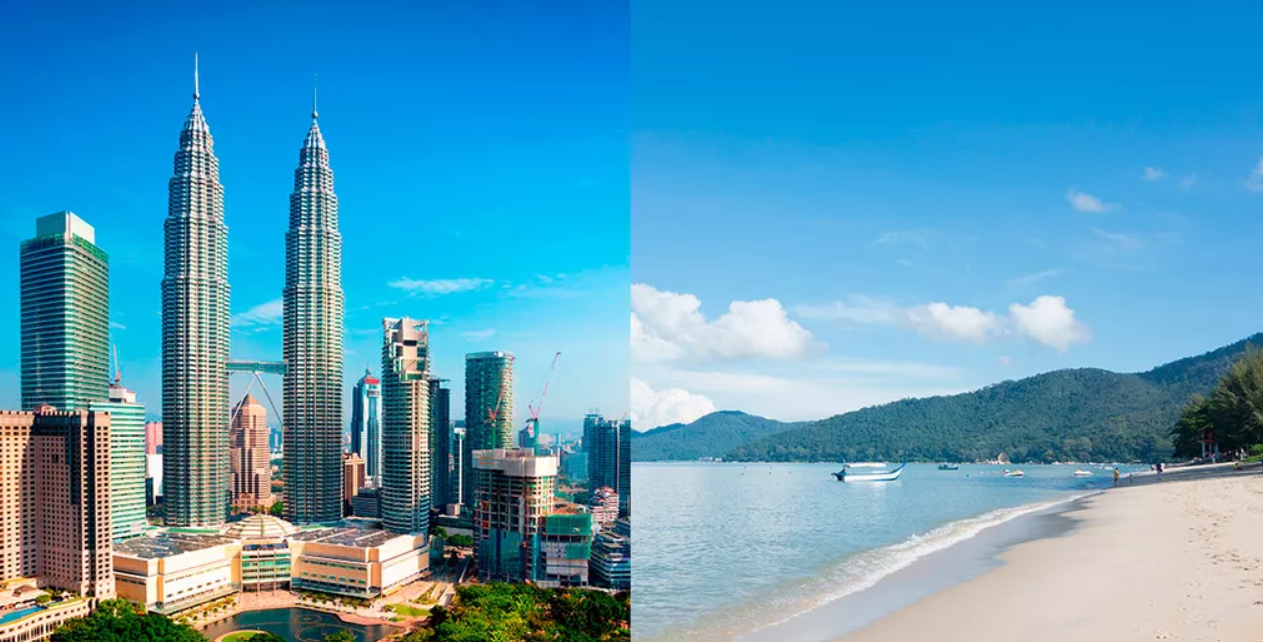
For retirees who seek connectivity and global amenities, Kuala Lumpur and Penang are the two main options. Sure, you could retire on a remote beach… but you might not have international food or even a decent hospital within close distance.
In Malaysia, imported goods are usually expensive due to taxes. On the other hand, local produce, dining, and amenities remain reasonably priced.
Cities like Penang and Kota Kinabalu are popular with retirees since they combine tropical island living with a lower cost of living than Kuala Lumpur.
With budget-friendly dining, domestic help, activities, and healthcare, retirees can stretch their nest egg further in Malaysia compared to back home.
Best Places to Retire in Malaysia
Deciding on where to settle down in Malaysia depends on the specific lifestyle you seek during your golden years.
Here’s an overview of the five most popular places to retire in Malaysia, from the bustling city of KL to quiet islands like Langkawi:
Kuala Lumpur
Malaysia’s modern capital has world-class amenities alongside cultural attractions. As the largest city in Malaysia, Kuala Lumpur offers endless dining, shopping, and entertainment options.
Retirees can live car-free thanks to the efficient public transit system centered around the metro and monorail networks. Expat enclaves like Bangsar and Mont Kiara provide community while still being close to the action.
Healthcare in Kuala Lumpur is high-quality, with some of Malaysia’s best hospitals located in the city. While cost of living is higher than other parts of Malaysia, the conveniences of city living may be worth it for some retirees.
Penang
Known as the “Pearl of the Orient”, Penang Island off Malaysia’s northwest coast features charming colonial architecture, sandy beaches, and scenic landscapes.
The UNESCO World Heritage Site of George Town serves as Penang’s capital with atmospheric shophouses, temples, and churches representing the multicultural history. Street art and a burgeoning arts scene add to George Town’s vibrance.
Beyond the city, retirees can enjoy Penang’s coastline and hillside temples connected by cable car.
Penang offers a lower cost of living than KL while still retaining big city amenities and an international ambience. English is widely spoken among the cosmopolitan local population.
Ipoh
In Malaysia’s interior, this mid-sized city offers a laid-back pace of life with lush natural surroundings. Situated among limestone hills and caves, Ipoh provides easy access to enjoy nature through activities like spelunking, rock climbing, cycling, and jungle trekking.
Chinese shophouses and colonial architecture give Ipoh’s city center charm. Cost of living is lower than on the coasts, allowing retirees to stretch their dollar further.
The generally cooler climate in Ipoh due to its higher elevation is also appealing to some retirees.
Langkawi
This duty-free island near the Thai border offers retirees fine sandy beaches surrounded by limestone cliffs and rainforest.
The 99 islands that make up the Langkawi archipelago offer a range of outdoor activities from diving, snorkeling and boating to golf, cycling and hiking through scenic parks.
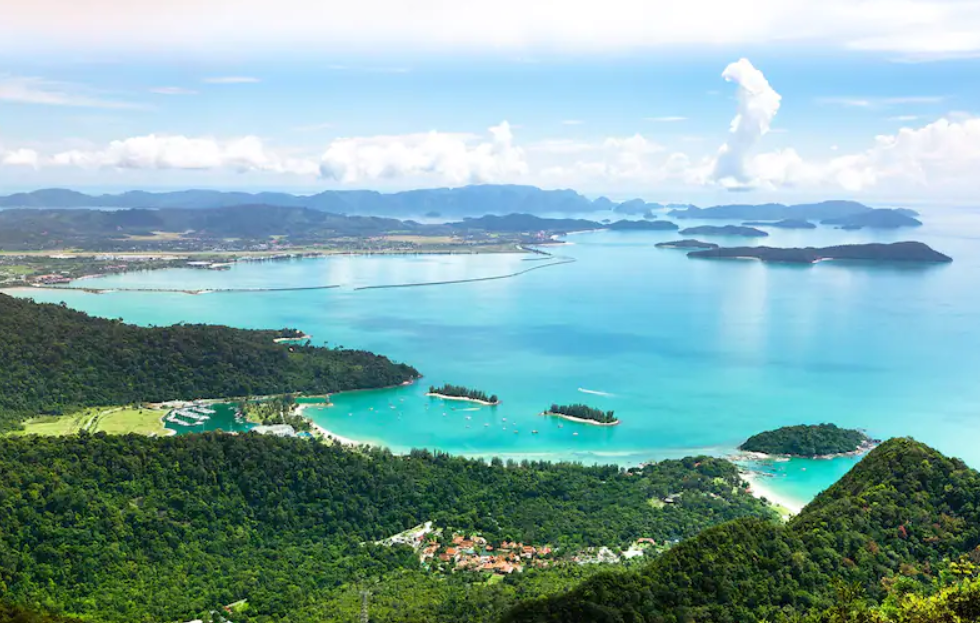
If you want to retire in Langkawi, there’s one minor problem: it’s difficult to find housing here. Large parts of the main island consist of protected land with the vast majority of it owned by locals.
Besides the difficulty of finding a place to live in Langkawi, beachfront resorts and villas provide homes with a view if you’re able to secure one. The island atmosphere makes for a very relaxing retirement option.
Melaka
Located on the Strait of Malacca, Melaka offers a unique blend of Peranakan, Portuguese, Dutch and British history.
The UNESCO World Heritage Site has historic attractions like the 17th century Dutch Stadhuys town hall, Jonker Street’s antique shophouses, and the Portuguese Settlement village.
Melaka provides a very affordable cost of living in a laid-back riverside setting. The city is compact enough to navigate by foot or trishaw, with restaurants and shops adding to quality of life. Healthcare facilities continue improving to cater to retirees.
Culture and Lifestyle in Malaysia
Malaysia’s multicultural society encompasses influences from its Malay, Chinese, Indian, and British heritage.
English is widely spoken in Malaysia’s cities and tourist areas, which makes it easy to get settled as a retiree.
Meanwhile, a tropical climate in Malaysia brings retirees year-round sunshine and high humidity. Low crime rates and political stability make Malaysia a secure environment for expats.
From bustling Kuala Lumpur to laid-back beach towns, Malaysia offers a high quality of life for an affordable cost. These factors have helped the country become more popular than ever among foreign retirees seeking an overseas lifestyle.
Is Retirement in Malaysia a Good Idea?
With its mix of natural beauty, modern conveniences, and low living costs, retiring in Malaysia is an enticing option.
Foreign retirees in Malaysia can gain long-term residence through visas like the MM2H program. Top-notch medical care is available affordably throughout the country.
To summarize, Malaysia’s diversity and amenities also allow for an engaging lifestyle in your golden years.
From its beach towns and world-class golf courses, to major cities, Malaysia can cater to almost any type of foreign retiree.
FAQs: Retiring in Malaysia
Does Malaysia Have a Retirement Visa?
There isn't a specific retirement visa in Malaysia. However, the MM2H and PVIP programs allow you to live in Malaysia permanently and are the two most popular ways to stay in the country.
Where Do Most Retirees Live in Malaysia?
Kuala Lumpur and Penang are the two most popular cities to live in Malaysia by far. Both of these places offer suitable healthcare and convienence.
By comparison, Malaysia's smaller cities and islands are often scenic yet lack the type of infrastructure that you'll probably want as a foreign retiree.
What Are the Best Hospitals in Malaysia?
Looking at a ranking of Malaysia's ten best hospitals, nine of these are located in the Kuala Lumpur metro area.
Specifically, Sunway Medical Center, Gleneagles, and Prince Court Medical Center are several of the top ranked hospitals in the country

